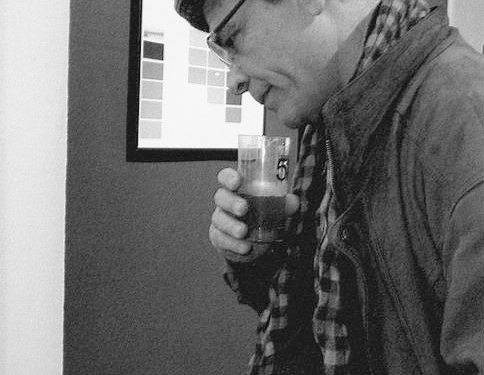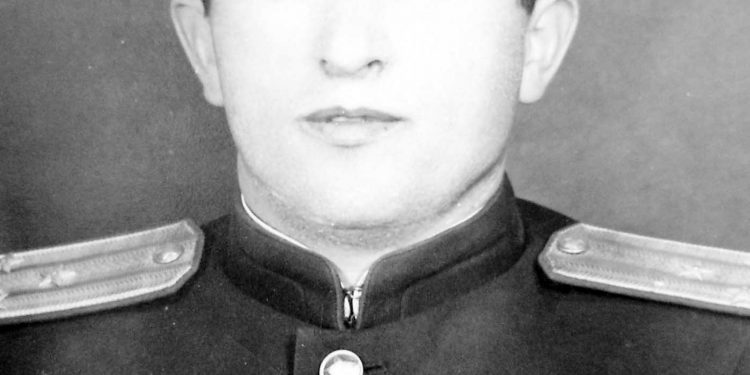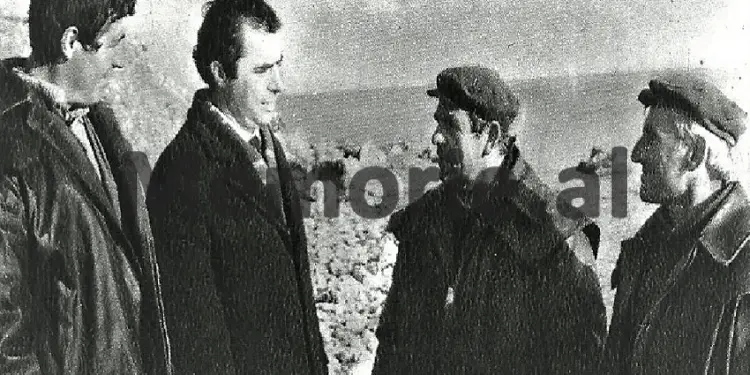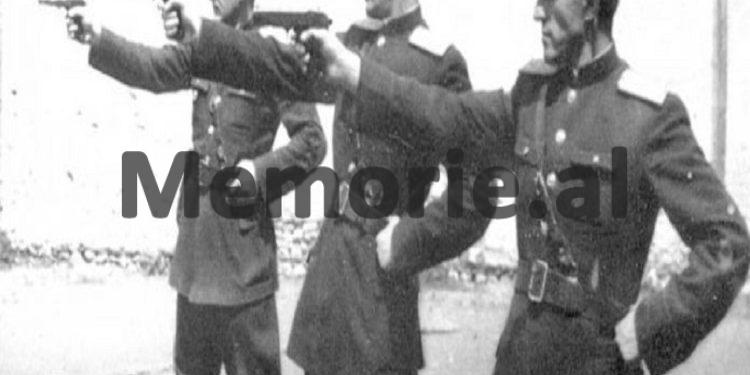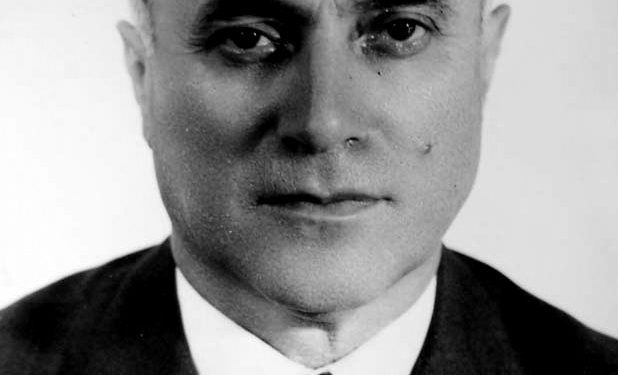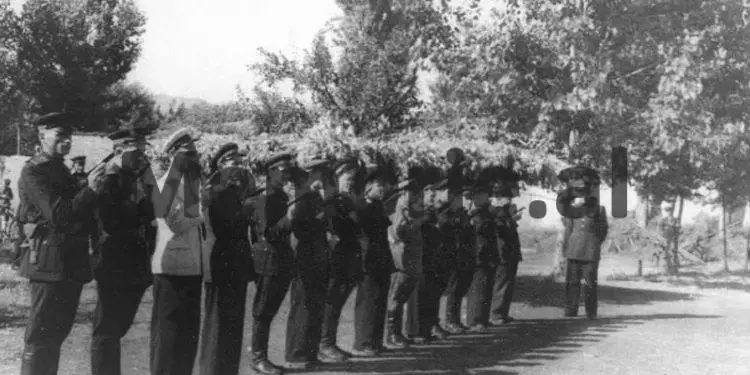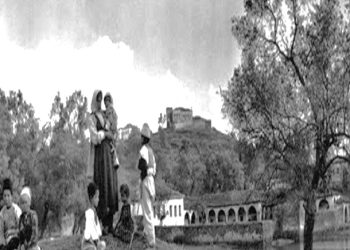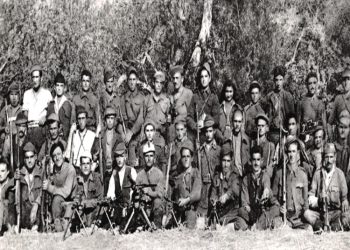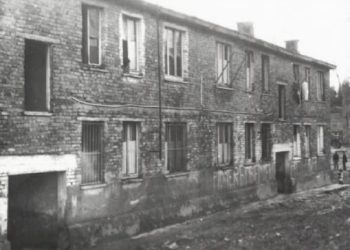By Vasil Qesari
Part twenty one
Memorie.al/ The overthrow of the great totalitarian edifice in Albania would leave behind, not only the change of the system, accompanied by lots of hopes, mirages and cries of happiness but, unfortunately, also many wounds, dramas, victims, dust, milk and disappointments from the most different. Ten years and more after that event, which deeply shook society, completely overturning many previous codes, rules and concepts, people still continue to ask themselves such questions as: What really happened in society Albanian, during the last 50 years of the dictatorship? How was it possible that the system managed to warp everything? Why did people accept it? What was the totalitarian logic of the transformation of society and the individual? How were the structures of totalitarian mechanisms conceived and functioning: propaganda, secret police and the exercise of the ideology of terror? How did it happen that among all the communist countries of Eastern Europe, Albania was considered an exception or a special case? Why did Enver Hoxha remain blindly, fanatically loyal to Stalin until the end, turning the country into a prison where violence, fear and purges continued until the end of the 80s? Why was the country so insanely isolated, locking people up between bunkers and barbed wire? Why, then, did all the above phenomena happen…?! The book “Post-scriptum for Dictatorship” does not claim to provide definitive answers to the above questions, or the complexity of the reasons that brought and maintained the totalitarian power in Albania. Nor is it a complete, deep and comprehensive fresco of the life and suffering that people experienced during that system. Its author, perhaps, has the merit that together with the retrospective view of the totalitarian period as well as the zeal of a passionate analyst, he has tried to turn his head back once again, to give not only his personal memories and opinions, but also to return once again to the vision of that era with the simple philosophy of preserving the Memory and supporting the Appeal to never forget the well-known maxim, that…the corpse’s nails and hair continue to grow even after death! Ten years or more after the great revolution, the book in question has current value and we hope it will be appreciated by the reader because, as an Albanian researcher also says… the greatest evil that can happen to a people comes when he fails to analyze his own past. An amnesic people are forced to be constantly neuropathic and repeat their painful experiences…!
It is known that, at the beginning of its activity (1945-1948), the Albanian State Security was instructed by the Yugoslav secret police, inheriting from it, among other things, the animal cruelty of settling accounts and the typical Balkan revenge. During that period, he was completely dependent and controlled by OZNA (Yugoslav State Security or otherwise Office of People’s Protection), about which the British observatory F. Waddams, in 1946, wrote:
“OZNA exercises absolute control over the life, freedom and property of every citizen. When she decides to arrest, imprison without trial or exile, no one dares to resist or ask for an explanation. That’s why the people here are terrorized…!”
Then, Sigurimi changed his boss. After Stalin’s conflict with Tito and the shooting of the Minister of Internal Affairs, Koçi Xoxe, in the middle of 1948, the first Russian advisers arrived in Tirana. They, along with the cleansing of Sigurimi from pro-Yugoslavs, introduced new working methods and long experience of the Stalinist school of violence, one of the wildest and cruelest in the world.
The basic principle of the activity of that monster machine, which at that time was led by M. Shehu (called a pro-Soviet fanatic), consisted in blindly, violently and bloodily implementing every order of the Party and personally of the commander, Enver Hoxha . Thus, very quickly, thanks to the Soviet help, the Albanian Security turned not only into a steel fist against the opponents, but also into an instrument of fear for the installation without resistance of the totalitarian system.
…In the outside world, December 1955 also marks the first date of an official document, which refers to the violence of the Albanian State Security. That year, the general secretariat of the UN published the report “Evidence on forced labor in Albania”, accompanied by the testimonies of 13 former convicts and political internees who had managed to escape from the country. The report affirmed the existence of about 40 prisons, labor camps and internment camps that had operated during the years 1944-1954, where over 80,000 prisoners had served their sentences, of which about 10,000 had died.
In that report, the testimony of the director of the Statistics Service at the General Prosecutor’s Office (who had escaped from Albania, there since 1948), according to which, at the end of 1947, there were over 18,000 political prisoners in the country, not counting those who served time in labor camps.
While, a few decades later, a senior officer of the former Security, in an interview given to an Albanian daily, testified that at the beginning of the 80’s there were about 40,000 prisoners in Albania, a figure equal to 1.5 percent of population, and that during the decade 1975-1985, Sigurimi arrested an average of 4,500 – 5,000 people each year. The work activity of the Security, during the period 1944-1954, which is considered among the wildest in the history of the Albanian totalitarian regime, was mainly focused on the discovery and ruthless liquidation of all opponents of the regime.
But who were they…?
The enemies of the Party, according to different historical stages, were generally divided into the following main categories:
The first category included personalities who had collaborated with the old Zogist regime or with the Nazi-fascist invaders. It was mercilessly exterminated the day after the communists took power.
In the II category, all the participants, activists and leaders of nationalist anti-fascist formations, such as, for example, the organizations Balli Kombëtar, Legaliteti, etc., were part of, most of who were annihilated during the years of the war and after it.
The third category included the democratic intellectuals, who continued the anti-communist oppositional resistance in secret even after November 1944 and a few years later. It included prominent intellectuals and clerics in its ranks, who then filled prisons and were exterminated in labor camps all over Albania.
The last category was the opposition within the Party itself.
(Sometimes, due to the diversity of opinions about the ways of implementing the Marxist ideology in Albania and, other times, due to different attitudes towards the relations with the Yugoslav, Soviet and Chinese allies, without speaking then, for reasons of ambitions, rivalry and the struggle for power).
Over the years, Enver Hoxha exterminated all these categories of enemies with incomparable viciousness and ferocity, precisely thanks to his faithful and much-loved weapon, the State Security…!
THE IMAGINARY ENEMY
As we emphasized above, the existence of the enemy, as well as that of opponents of any kind, is the first and main justification for the exercise of political violence. The totalitarian regime cannot live without the existence of enemies. They are, for him, the best justification for the exercise of terror. Even if they don’t exist, they are invented and then, once they are “identified”, they are mercilessly eliminated.
The vicious and cruel logic of this revolutionary pragmatism undoubtedly brings to mind many events of the past. The endless revelations of conspiracies, putschs, groups of infinite enemies of Albania, accompanied by the slogans: “The enemy is a snake, whose head must be crushed as early as an egg”, or, the commonly used one, originate there during election campaigns: “Votes for the Front are bullets for the enemy”, etc.
Thus, in such a paranoid climate, the presence of the enemy turned into permanent fear, the existence of which was installed gradually and generally not only in society, but what was even more important for the totalitarian state, in every simple individual.
Then, with the completion of the process of installing fear, it began to terrorize it with different methods and ways. And, especially, through surveillance. For that purpose, among others, a large network of collaborators of the organs of the dictatorship stretched across the country, covering it like a spider’s web.
Hundreds of thousands of eyes and ears, watching and eavesdropping on everything. The number of people cooperating with the Security was huge. Some of them worked voluntarily, but there were also those who became informers and agents, being rewarded with money. Their presence and activity encouraged a rampant witch-hunting competition, which took place in every cell of society. From everywhere, there appeared a strange and hysterical readiness to fight the internal enemies, from where they were and where they were not. At work, neighborhood, family, school, village. Everywhere…!
The denunciations, in most cases, provoked in their authors, a secret and evil sense of cynical satisfaction. (Only, in a totalitarian society, it happens that people do not enjoy the comfort of those around them. On the contrary, usually, the misfortune of others turns into a source of joy from the jackal). In such a vicious society, that evil feeling of making others suffer, as Montaigne puts it, was thus diabolically placed at the disposal of every individual.
(Anyone’s ability to harm anyone – this is one of the most macabre inventions of the totalitarian system…!)…To take someone to prison…?! Yes, that was back then, the easiest thing…!
Each person, for a certain reason or motive, could take the other by the neck without difficulty and forever. With an anonymous letter or verbal denunciation to the Security authorities, you can implicate your colleague, neighbor, friend, father, brother or anyone else, close or distant. Thus, for the regime, the intervention or destruction of the individual’s private life was not a problem.
Meanwhile, the terror exercised against society and the individual was justified on the basis of one of the fundamental principles of Marxist ideology: that of class war.
But what did she represent in herself? What were her goals?
It is interesting to underline the fact that, in that type of war, both dictatorships and totalitarianism had the same strategies, means and objectives, which matched almost completely. Thus, for example, the totalitarian communist state applied to “class enemies”, the same strategy that the Nazis applied to the Jews.
Dictatorship – an authoritarian political regime, established and maintained by violence, where an individual or a group of people hold absolute power in their hands.
Totalitarianism – doctrinal, philosophical, political or ideological claim, to acquire the totality of national life within a monism of power and world view. With this term regimes have been defined, which, at first glance, may have appeared different. Like, say, the Stalinist Soviet Union, Hitler’s Germany, Mao Zedong’s China, or Khomeini’s Iranian regime. Some of the main characteristics of totalitarian regimes are the cult of the individual, monopoly of ideology, spiritual, artistic, trade union life, control of all levers of power and the establishment of an oppressive police regime. (Microsoft Encyclopedia 1999)
It is known that the Jews were not persecuted and exterminated because of acts of sabotage or hostile acts, but simply because of their orgy. Exactly, the same philosophy was applied by the Albanian totalitarian state in the class war. His first and main objective, starting after taking power in 1944, was precisely the extermination of the bourgeoisie as a class.
(To eliminate a bourgeois, it was not necessary for him to carry out any sabotage or hostile activity. No…! It was enough that he was with the orgy or a member of that class and everything that justified it. So, by analogy, even in Albania, the children of the “ex-bourgeois”, had the stamp of the enemy on their foreheads, just like the Jews, the star imposed by the Gestapo).
Whereas:… the Nazis, who divided society into Aryans and others, were based on the fetish principle of race. It was a categorical and absolute separation. Either you had to be Aryan or nothing…! Even the Bolsheviks, for their part, applied more or less the same principle for the selection of their human “material”. The basic criterion was the family and social origin of the individual. Specifically, the proletarian origin was, among other things, the best guarantee for to move up the political hierarchy Just as the Nazis persecuted Jews and their children by branding them with the Star of David, so the Communists persecuted individuals deemed declassified.
Here are two examples:
First story: My childhood friend, A. Lepenica, lived alone with his mother, an elderly retired teacher. (His father, with the orgy from a “reactionary” family, had died years ago). He was an intelligent boy and passionate about reading foreign languages. But at school, for his special qualities, they never appreciated him properly. On the contrary, he was seen with crooked eyes.
And this, for the sole reason, because you had the last name Lepenica. Then, for his “evil” origin, he would pay the “tribute” that was begged. Without any reason, but simply on the basis of a trap and some false testimony, he was arrested at the age of 18 and sentenced to 10 years in prison. While serving his sentence, he was again sentenced to another 8 years on the charge of “propaganda agitation”.
After serving his sentence, he returned to his hometown, but found no one at home. Mother was dead. It wasn’t long before he was back in the cell. This time, I was accused of allegedly refusing to perform compulsory military service. A. Lepenica, was released after many years, not from prison but from… Psychiatric Hospital. Completely destroyed, physically and mentally, he was able to survive only on the modest help that some relatives of the family gave him from time to time, as well as various friends and companions.
The second story: The father had finished his higher studies in law in Graz, Austria. He was sentenced to 20 years in prison in 1959 because he had a “bourgeois” culture and came from a well-known nationalist family. At that time, we were small, I was 11 and my sister was 9 years old. After his arrest, one day later, a policeman came to our house and handed the mother a summons. It said that at 6 o’clock in the afternoon she had to appear at the Internal Affairs Branch. Around 5 o’clock, the mother started to dress.
I watched as she combed her long blonde hair in front of the mirror. She was a gentle, sweet and beautiful woman. Then, she came out and told us not to worry, that she would be back soon. The hours passed and we waited and waited. We sat until late at night, both of us – brother and sister, looking at the street beyond the window panes…!
The mother returned home after midnight. It was messed up and messed up. Your face was as white as a sheet and your hair was disheveled. Once inside, she headed to the stove in the kitchen. He undressed and threw all his body clothes into the fire. Then, he went to the bathroom and took a shower. Only after performing those actions, she called us and, drowning in tears, hugged us tightly to her chest. The next day, the mother tried to poison herself, drinking a bottle of fly repellent. Fortunately, the neighbors rushed him to the hospital, he was saved from death.
She attempted suicide two more times. Afterwards, my uncles took her and admitted her to the District Psychiatric Hospital, where she died in 1969. We never dared or sought to learn the cause of her “disease”. Late, many years later, we managed to find out what had happened to him during that terrible night, when he was called to the police. He had been raped in the office by a senior head of Security and, after that incident; the mother no longer wanted life…! Memorie.al
The next issue follows




